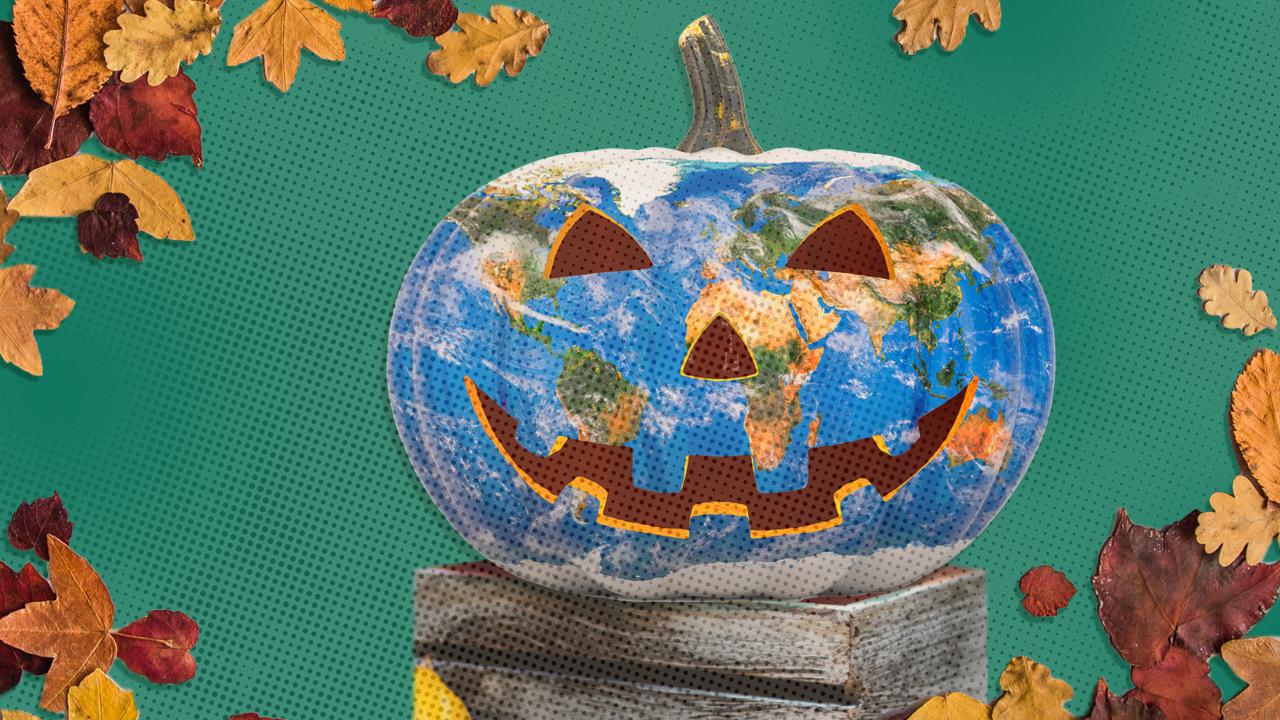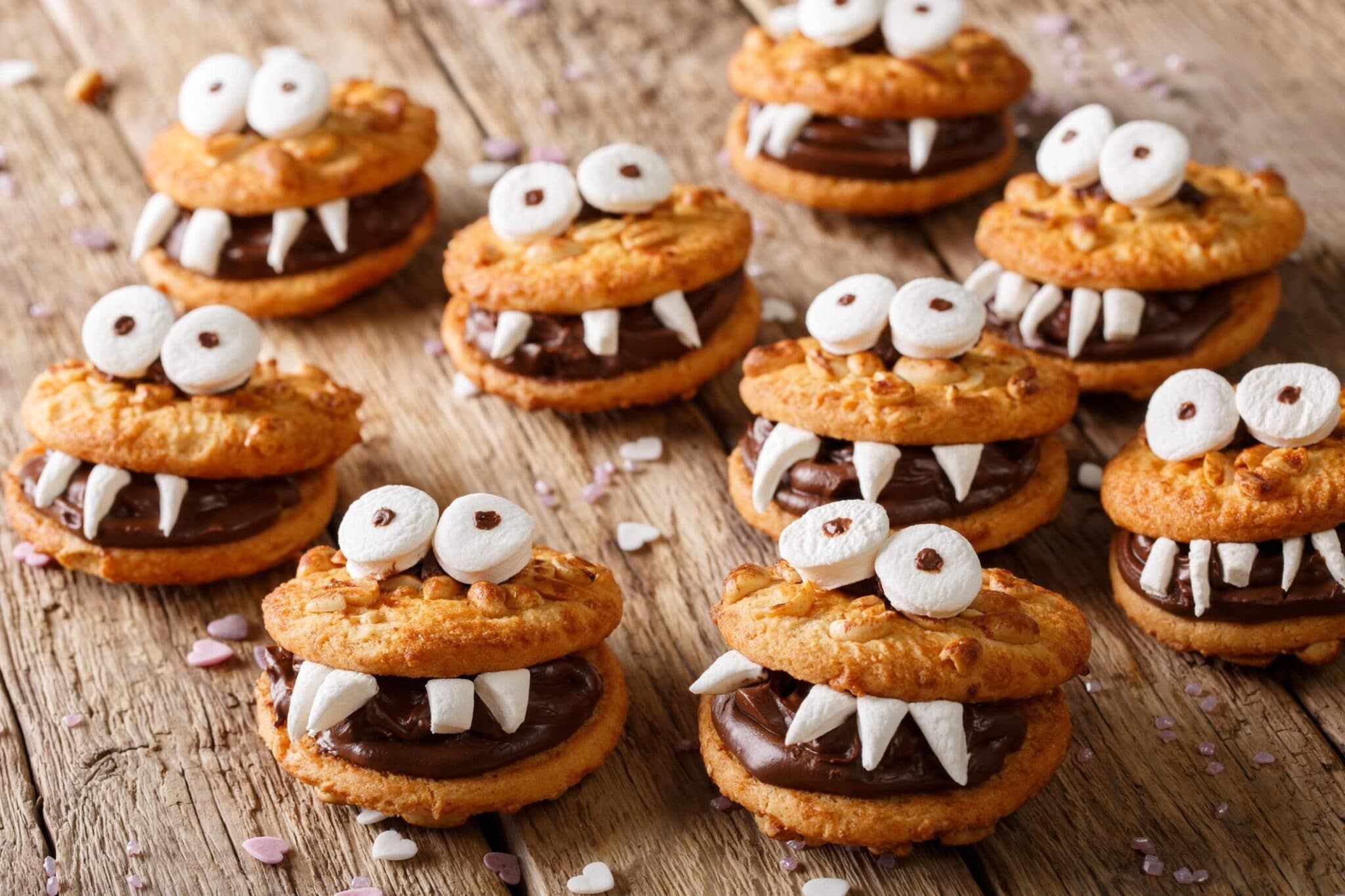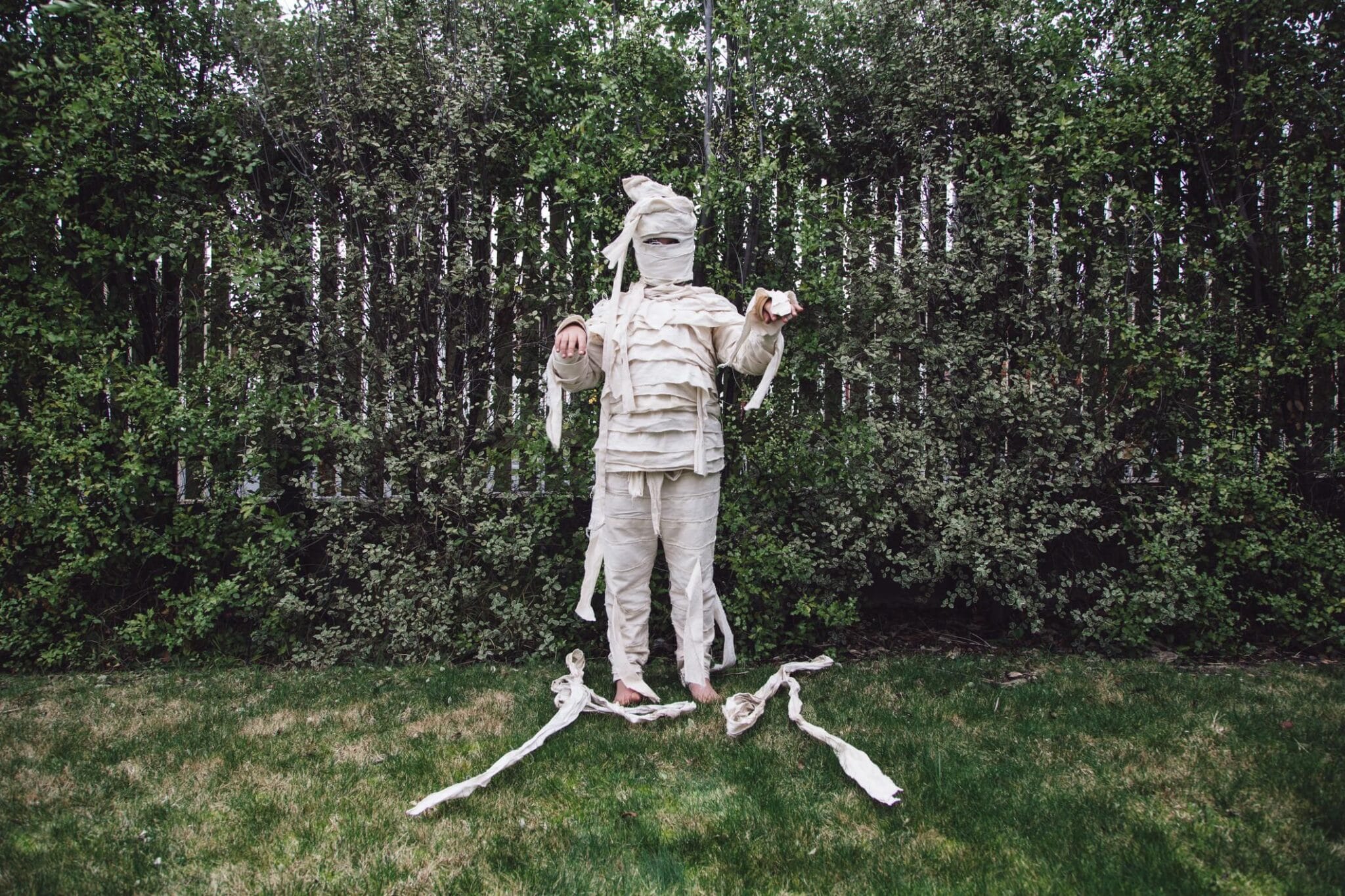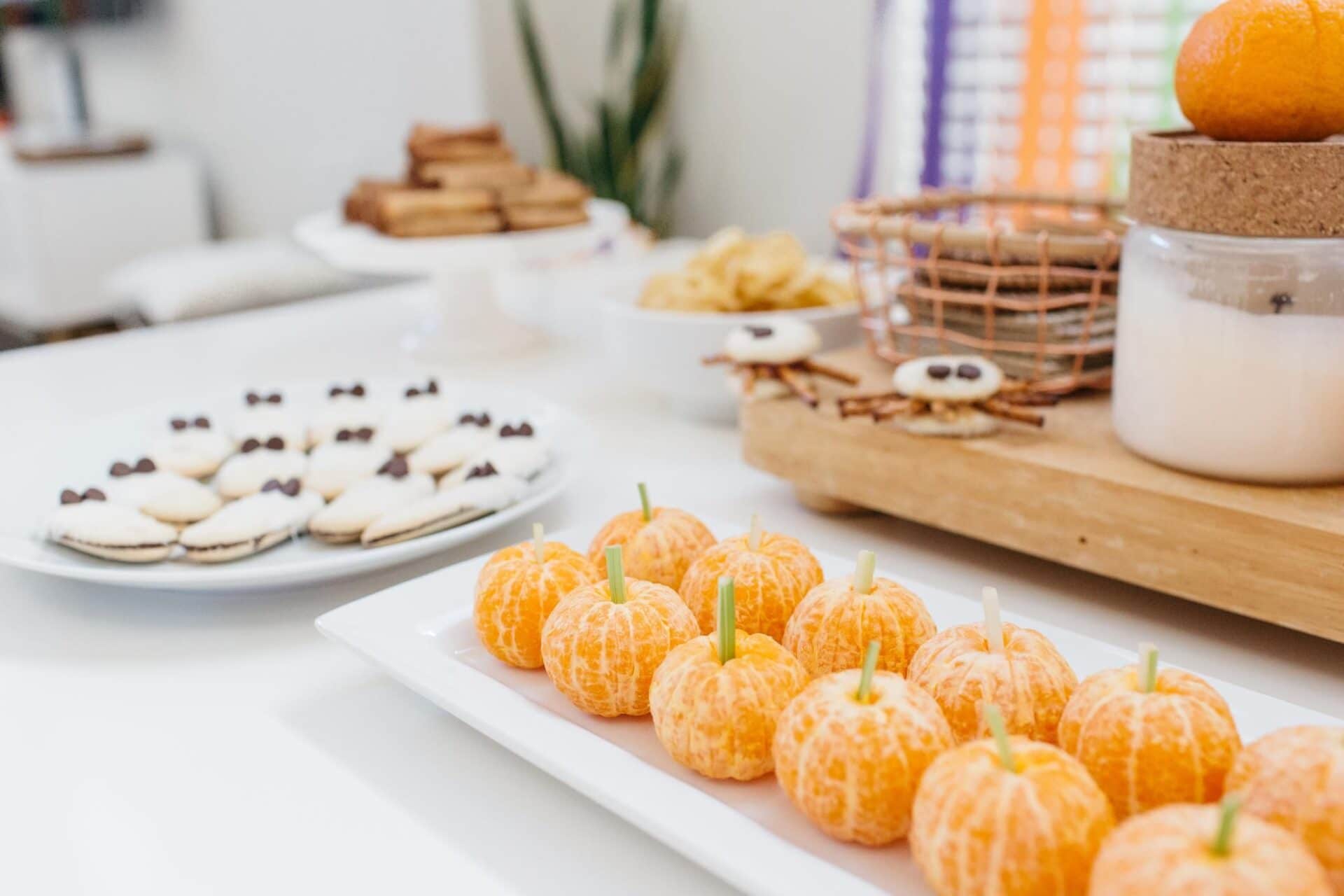6 Tricks for a Green Halloween
It's less spooky for the planet.

EcoWatch Illustration by Devon Gailey
 Why you can trust us
Why you can trust us
Founded in 2005 as an Ohio-based environmental newspaper, EcoWatch is a digital platform dedicated to publishing quality, science-based content on environmental issues, causes, and solutions.
Ghosts and skeletons aren’t the only thing that makes the Halloween season spooky; the waste generated from trick-or-treat candy, Halloween parties, costumes, pumpkin carving, and decorating should all be cause for fright.
A UK study found that 2,000 metric tons of waste are produced every year from Halloween costumes and clothes alone, which unfortunately isn’t surprising, given that 83% of costume pieces are made from non-biodegradable plastic.
This year, leave the scaring to the ghosts and make your celebrations less frightful. Here are a few ways to green your Halloween.
1. Greener Candy
No one wants to be the dreaded house on the trick-or-treat route that hands out fruit or raisins, but luckily, there are plenty of delicious, sugary favors that are also environmentally conscious.
Most gummy candies contain gelatin, which is not vegetarian (or vegan). It’s made from boiling animal by-products like bones and ligaments, and can be replaced by vegan alternatives, like agar agar. Search the grocery store aisles for animal- and gelatin-free gummy candies like Annie’s Bunny Fruit Snacks, Swedish Fish, Dots, and Sour Patch Kids.
Many popular candy products contain synthetic preservatives, GMOs, palm oil, and other environmentally-harmful ingredients. Look instead for candy from reputable companies with sustainable practices, with the Fair Trade Certified and USDA Organic labels. A few environmentally-friendly candy options include:
- Alter Eco Truffles
- Clif Kids Fruit Ropes, Bars, or Brownies
- Equal Exchange Chocolate Bites
- Endangered Species Chocolate Bites
- Glee Gum
- Justin’s Dark Chocolate Peanut Butter Cups
- YumEarth Snack Packs and Lollipops
If buying eco-friendly candy is a little too pricey, choose treats with better packaging, if possible. Plastic packaging accounts for 30% of all solid waste generated in the U.S. every year, which includes all of those miniature candy bags and lollipop wrappers. Look for traditional candy with the least packaging or cardboard packaging, like Nerds, Milk Dudes, Junior Mints, and other candies that come in small boxes – or, opt for candies wrapped in foil, which can be recycled. Mints and other candies that come in tins, like Altoids, also entail less plastic waste.
If your grocery store stocks loose, individually-wrapped candies, scoop those into a reusable grocery bag instead of choosing a bulk bag of them off the shelf.
2. Try Other Treats

ALLEKO / iStock / Getty Images Plus
Candy doesn’t have to be the only thing handed out on Halloween!
If you’re a plant parent, tiny propagated plants – like pothos, aloe, or other plants easy to repot cuttings from – potted in recyclables (pasta sauce jars, parmesan cheese containers, milk cartons, etc.) also make great, exciting favors for kids.
Another waste-free option is making your own candy, cookies, or treats to package in paper bags and hand out to trick-or-treaters. Try this homemade rock candy, or your household’s favorite cookie recipe. Be sure to include a label on homemade treats with a full list of ingredients so parents know what’s in it. If you go the homemade route, note that not all parents will be comfortable with unwrapped treats for their children, so it might be a better option for those who live in a small neighborhood and know the folks coming through on trick-or-treat night.
3. Pick Your Own Pumpkins and Don’t Toss the Guts
While festive, pumpkins are a significant source of waste around the fall holidays – especially when they’re transported long distances to make it to your front stoop. Instead of buying supermarket pumpkins, which were probably grown far away, plan a time to visit a local pumpkin patch to pick your own. If you’re short on time, many farms sell pumpkins at farmers markets or right out front on site, so you don’t even have to traipse around the field to find the perfect one.
1.3 billion pounds of pumpkins are thrown out each year after Halloween, as estimated by the U.S. Department of Energy. Make sure your holiday pumpkin isn’t included in the 40% of our national food supply that gets wasted every year.
Use the guts of the pumpkin – or, the whole pumpkin, as long as it hasn’t started to visibly decay after carving – to make puree for recipes, like this pumpkin bread from NYT cooking, pumpkin pancakes, or a creamy pumpkin soup. Separate the seeds and toast them with oil and herbs for a party treat, snack, or topping for salads and fall soup.
Compost jack-o-lanterns after the holiday season, either in your own compost bin, or research facilities nearby that can take it. You can also bury them directly in your garden to compost and provide nutrients for next year’s flowers. Or, break them into pieces and leave outdoors for furry friends to feast on (if they haven’t helped themselves already).
4. Crafty Costumes

Jodie Griggs / The Image Bank / Getty Images
When brainstorming your perfect Halloween costume, consider characters that don’t require buying pieces that’ll just get tossed or donated after the holiday. Try to put a costume together with items from your wardrobe, and make props or accessories from recycled materials, like cat ears out of a headband and painted cardboard, or bat wings from a broken umbrella. Ask around to see if any friends, family, or roommates might have what you need before buying it new. It might be best to choose a costume that doesn’t require wildly-specific pieces, unless you’re able to borrow or buy it used.
If you find yourself still in need of accessories or staple clothing items for your costume, check out thrift stores or other second-hand avenues, like Facebook marketplace. Some used clothing stores – like Buffalo Exchange, for one – have costume sections already set up for you to browse. Otherwise, look into costume rental services nearby that can lend you a full, elaborate costume without the environmental cost.
Also, if your costume requires glitter – which is essentially a microplastic itself – make sure to use plastic-free, compostable glitter.
5. Waste-Free Decorations
Instead of loading your cart with heavily-packaged, heavily-plasticized Halloween decorations, get crafty and make your own.
Repurposed materials can be transformed into spooky, festive decorations; use cardboard boxes for tombstones, paper bags for lanterns, wine bottles for candle-holders, and yarn for spiderwebs. Better yet, bring the outside in with hay, pumpkins, gourds, corn stalks, pinecones, acorns, or a homemade wreaths of leaves to make your home festive. These eco-friendly decorations can be composted along with your other yard scraps at the end of the season.
Keep old decorations so they can be reused every year – besides the organic stuff, of course.
6. Party Sustainably

jin chu ferrer / Moment / Getty Images
If you’re playing the part of Halloween-party-host this year, consider ways to make your celebration more sustainable.
Consider using TerraCycle to dispose of the wrappers from candy eaten at the party. This recycling company can recycle practically anything, and sells boxes that can be filled with waste and sent back, or you can utilize one of their drop-off locations. Have guests toss their wrappers in a bin that you can deal with later; or, buy unwrapped candy in bulk, and serve in a bowl with a ladle, so guests can scoop it out themselves and circumvent the waste entirely.
Instead of disposables, use normal dishware, silverware, napkins, and cups to wash after the guests leave; or, choose biodegradable alternatives if you have an avenue to compost them. It doesn’t do much good to send compostable dishware to landfills, which are airtight and don’t allow for them to aerobically break down, so send them to a commercial composting facility, if possible. Some compostable dishware can be placed in your own compost bin at home, but many require a commercial composting facility to break down. Look into the specifics for the product you buy.
Make your own snack trays, desserts, and mains for the party, instead of buying packaged, pre-made platters and meals at the grocery store. Better yet, make the event a potluck, and ask each guest to bring an item they’ve prepared so you don’t have to do all the work.
Linnea graduated from Skidmore College in 2019 with a Bachelor’s degree in English and Environmental Studies, and now lives in Brooklyn, New York. Along with her most recent position at Hunger Free America, she has interned with the Sierra Club in Washington, DC., Saratoga Living Magazine, and Philadelphia’s NPR Member Station, WHYY.
- Eek! Bat Populations Are Shrinking. Here Are A Few Ways to Help ...
- 10 Healthy-ish Halloween Treats That Won't Make Your Kids Roll ...
- 9 Guilt-Free Healthy Alternatives to Candy - EcoWatch
Subscribe to get exclusive updates in our daily newsletter!
By signing up, you agree to the Terms of Use and Privacy Policy & to receive electronic communications from EcoWatch Media Group, which may include marketing promotions, advertisements and sponsored content.

 233k
233k  41k
41k  Subscribe
Subscribe 



